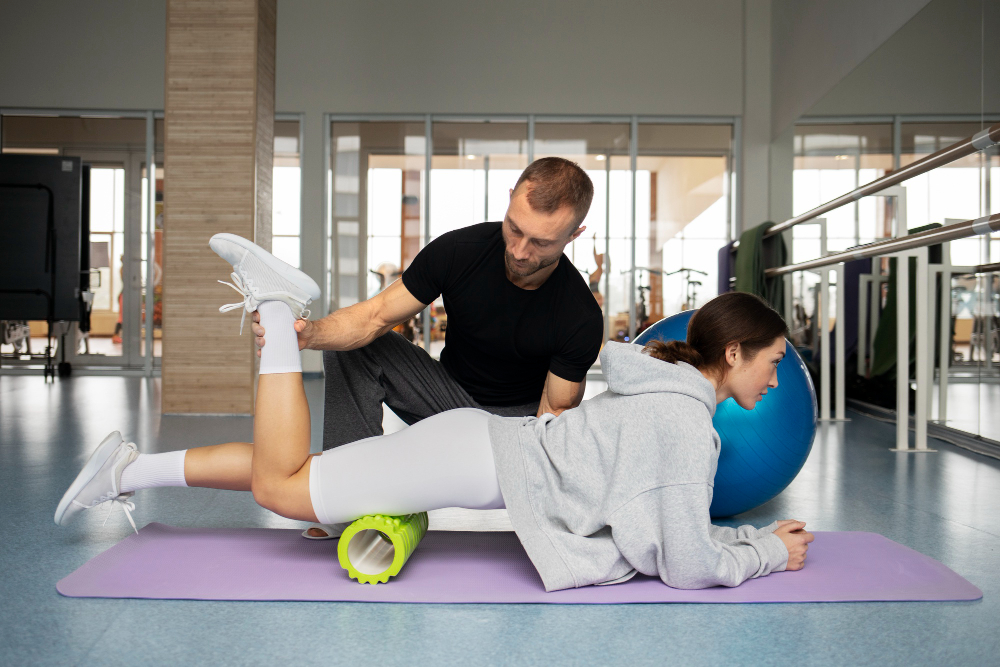Sports Recovery Techniques are essential for athletes and fitness enthusiasts seeking to reduce muscle soreness and enhance overall performance. Whether you’re training for competitive events or engaging in recreational workouts, understanding effective recovery methods can significantly impact how quickly your muscles heal and how well you perform in subsequent sessions.
Muscle soreness, often experienced after intense training, can hinder progress if not addressed properly. From professional athletes to weekend warriors, everyone can benefit from practical recovery strategies that blend science, nutrition, and smart training practices. Real-life stories of marathon runners, gym enthusiasts, and team athletes highlight the importance of integrating recovery techniques into daily routines.
Active Recovery to Boost Circulation
One of the most effective Sports Recovery Techniques is active recovery. Gentle movement after intense workouts promotes blood flow to sore muscles, helping deliver nutrients and oxygen necessary for repair. Activities such as light jogging, cycling, or swimming at low intensity are excellent examples of active recovery.
Professional athletes often incorporate active recovery sessions into their training schedules. For instance, soccer players might engage in light ball-handling drills post-match to maintain mobility while reducing muscle stiffness. This approach not only alleviates soreness but also improves flexibility and reduces the risk of injury.
The Role of Proper Hydration
Hydration plays a critical role in recovery. Water supports nutrient transport, regulates body temperature, and helps flush out metabolic waste produced during exercise. Dehydration can exacerbate muscle soreness and prolong recovery times. (Sports Recovery Techniques)
Elite athletes, especially in endurance sports like cycling or marathon running, monitor fluid intake carefully. Consuming electrolyte-rich beverages post-workout can replenish lost minerals such as sodium and potassium, which are vital for muscle function and preventing cramps.
Nutrition for Muscle Repair
Nutrition is another cornerstone of Sports Recovery Techniques. Protein intake post-exercise supports muscle repair, while carbohydrates restore glycogen stores depleted during activity. Balanced meals that include lean proteins, complex carbohydrates, and healthy fats accelerate recovery and optimize performance.
For example, after a long-distance run, runners often consume a mix of protein shakes and fruits to promote rapid muscle recovery. Similarly, team athletes may follow structured post-game meals to ensure their muscles and energy systems are adequately replenished for upcoming matches.
Stretching and Mobility Work
Stretching and mobility exercises are vital for reducing muscle tension and soreness. Incorporating dynamic stretches before exercise and static stretches after workouts can improve flexibility, reduce tightness, and prevent delayed onset muscle soreness (DOMS). (Sports Recovery Techniques)
Yoga and Pilates routines are increasingly popular among athletes seeking to combine flexibility, balance, and recovery. These practices also help athletes enhance body awareness and maintain joint health, which is crucial for long-term performance.
Sleep and Recovery
Sleep is often overlooked but is one of the most powerful Sports Recovery Techniques. During deep sleep, the body releases growth hormone, which is critical for muscle repair and regeneration. Athletes who prioritize consistent, quality sleep experience faster recovery, improved cognitive function, and enhanced physical performance.
Olympic athletes often schedule naps and strict sleep routines to ensure their bodies recover optimally between training sessions. Sleep hygiene practices, such as maintaining a dark, quiet environment and consistent sleep schedule, further support recovery.
Cold and Heat Therapy
Temperature-based therapies can also aid recovery. Cold therapy, such as ice baths or cryotherapy, helps reduce inflammation and muscle soreness after intense workouts. Heat therapy, on the other hand, relaxes tight muscles, improves circulation, and prepares the body for future training sessions. (Sports Recovery Techniques)
Many professional sports teams integrate contrast therapy, alternating between hot and cold treatments, to optimize recovery. This technique accelerates healing, decreases muscle fatigue, and supports overall athletic readiness.
Mindfulness and Stress Management
Mental recovery is just as important as physical recovery. Practices like meditation, deep breathing, and mindfulness can reduce cortisol levels, which are often elevated after intense training or competition. Lower stress levels promote faster healing and enhance focus and performance in subsequent workouts. (Sports Recovery Techniques)
Athletes in high-pressure sports, such as tennis or competitive swimming, often incorporate mindfulness sessions into their routines. These practices support not only physical recovery but also mental resilience, which is critical for peak performance.
Integrating active recovery, proper hydration, targeted nutrition, stretching, quality sleep, temperature therapy, and mindfulness represents a comprehensive approach to Sports Recovery Techniques. These strategies collectively reduce muscle soreness, accelerate healing, and enable athletes to perform at their best consistently.
Read also:
parveen shakir poetry in hindi
dogla insaan
memories quotes
दोगले रिश्तेदार शायरी

